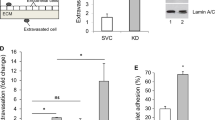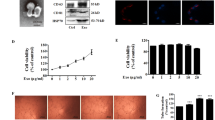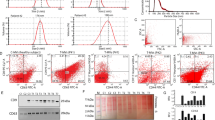Abstract
Background:
Recently, it was reported that the soluble vascular endothelial growth factor receptor-2 (sVEGFR-2) is secreted by microvascular endothelial cells from human BPH (HPECs). The purpose of this study was to investigate the modulation of sVEGFR-2 by common endothelial cell stimulators. In addition, the physiological role of sVEGFR-2 with regard to the VEGF-stimulated proliferation of HPEC was investigated.
Methods:
HPECs were isolated and cultured from fresh BPH tissue. After the incubation of HPECs either with adenosine triphosphate (ATP), interleukin (IL)-6, IL-8 or IL-12, the secretion of sVEGFR-2 was measured by enzyme-linked immunosorbent assay. For measurement of HPEC proliferation influenced by sVEGFR-2, VEGF-stimulated HPEC was cultured with/without sVEGFR-2. Cell proliferation was assessed with the Alamar Blue method.
Results:
The sVEGFR-2 secretion was increased by ATP and decreased by IL-12 and IL-8, respectively. IL-6 did not show any significant effect on sVEGFR-2 secretion of HPECs. HPEC proliferation was significantly inhibited by sVEGFR-2.
Conclusions:
In this study, our data suggest that the secretion of sVEGFR-2 by microvascular endothelial cells from prostate origin is influenced by multiple endothelial cell stimulators. Furthermore, our data suggest that sVEGFR-2 acts as an antiangiogenic factor.
This is a preview of subscription content, access via your institution
Access options
Subscribe to this journal
Receive 4 print issues and online access
$259.00 per year
only $64.75 per issue
Buy this article
- Purchase on Springer Link
- Instant access to full article PDF
Prices may be subject to local taxes which are calculated during checkout




Similar content being viewed by others
References
Lissbrant IF, Lissbrant E, Damber JE, Bergh A . Blood vessels are regulators of growth, diagnostic markers and therapeutic targets in prostate cancer. Scand J Urol Nephrol 2001; 35: 437–452.
Bates M, Kovalenko B, Wilson EL, Moscatelli D . Endothelial cells support the growth of prostate tissue in vivo. Prostate 2008; 68: 893–901.
Szentirmai O, Baker CH, Bullain SS, Lin N, Takahashi M, Folkman J et al. Successful inhibition of intracranial human glioblastoma multiforme xenograft growth via systemic adenoviral delivery of soluble endostatin and soluble vascular endothelial growth factor receptor-2: laboratory investigation. J Neurosurg 2008; 108: 979–988.
Risau W . Differentiation of endothelium. FASEB J 1995; 9: 926–933.
Gerritsen ME . Functional heterogeneity of vascular endothelial cells. Biochem Pharmacol 1987; 36: 2701–2711.
Thorin E, Shatos MA, Shreeve SM, Walters CL, Bevan JA . Human vascular endothelium heterogeneity. A comparative study of cerebral and peripheral cultured vascular endothelial cells. Stroke 1997; 28: 375–381.
Stachon A, Schlüter T, Köller M, Weisser H, Krieg M . Primary culture of microvascular endothelial cells from human benign prostatic hyperplasia. Prostate 2001; 48: 156–164.
Stachon A, Schlüter T, Junker K, Knopf HJ, Neuser RD, Krieg M . The secretion of endothelin-1 by microvascular endothelial cells from human benign prostatic hyperplasia is inhibited by vascular endothelial growth factor. Growth Factors 2004; 22: 281–289.
Stachon A, Aweimer A, Stachon T, Tannapfel A, Thoms S, Ubrig B et al. Secretion of soluble VEGF receptor 2 by microvascular endothelial cells derived by human benign prostatic hyperplasia. Growth Factors 2009; 27: 71–78.
Franck-Lissbrant I, Häggström S, Damber JE, Bergh A . Testosterone stimulates angiogenesis and vascular regrowth in the ventral prostate in castrated adult rats. Endocrinology 1998; 139: 451–456.
Folkman J . Editorial: Is tissue mass regulated by vascular endothelial cells? Prostate as the first evidence. Endocrinology 1998; 139: 441–442.
Ferrara N . Vascular endothelial growth factor and the regulation of angiogenesis. Recent Prog Horm Res 2000; 55: 15–36.
Soltau J, Drevs J . Mode of action and clinical impact of VEGF signalling inhibitors. Expert Rev Anticancer Ther 2009; 9: 649–662.
Ebos JM, Lee CR, Bogdanovic E, Alami J, Van Slyke P, Francia G et al. Vascular endothelial growth factor-mediated decrease in plasma soluble vascular endothelial growth factor receptor-2 levels as a surrogate biomarker for tumor growth. Cancer Res 2008; 68: 521–529.
Albuquerque RJ, Hayashi T, Cho WG, Kleinman ME, Dridi S, Takeda A et al. Alternatively spliced vascular endothelial growth factor receptor-2 is an essential endogenous inhibitor of lymphatic vessel growth. Nat Med 2009; 15: 1023–1030.
Agostini H, Boden K, Unsöld A, Martin G, Hansen L, Fiedler U et al. A single local injection of recombinant VEGF receptor 2 but not of Tie2 inhibits retinal neovascularization in the mouse. Curr Eye Res 2005; 30: 249–257.
Bevilacqua MP, Stengelin S, Gimbrone Jr MA, Seed B . Endothelial leukocyte adhesion molecule 1: an inducible receptor for neutrophils related to complement regulatory proteins and lectins. Science 1989; 243: 1160–1165.
Hewett PW, Murray JC . Human microvessel endothelial cells: isolation, culture and characterization. In Vitro Cell Dev Biol 1993; 29A: 823–830.
Hahn D, Simak R, Steiner GE, Handisurya A, Susani M, Marberger M . Expression of the VEGF-receptor Flt-1 in benign, premalignant and malignant prostate tissues. J Urol 2000; 164: 506–510.
Krupski T, Harding MA, Herce ME, Gulding KM, Stoler MH, Theodorescu D . The role of vascular endothelial growth factor in the tissue specific in vivo growth of prostate cancer cells. Growth Factors 2001; 18: 287–302.
Hrouda D, Nicol DL, Gardiner RA . The role of angiogenesis in prostate development and the pathogenesis of prostate cancer. Urol Res 2003; 30: 347–355.
Sordello S, Bertrand N, Plouët J . Vascular endothelial growth factor is up-regulated in vitro and in vivo by androgens. Biochem Biophys Res Commun 2003; 251: 287–290.
Campbell CL, Savarese DM, Quesenberry PJ, Savarese TM . Expression of multiple angiogenic cytokines in cultured normal human prostate epithelial cells: predominance of vascular endothelial growth factor. Int J Cancer 1999; 80: 868–874.
Häggström S, Bergh A, Damber JE . Vascular endothelial growth factor content in metastasizing and nonmetastasizing dunning prostatic adenocarcinoma. Prostate 2000; 45: 42–50.
Hicklin DJ, Ellis LM . Role of the vascular endothelial growth factor pathway in tumor growth and angiogenesis. J Clin Oncol 2005; 23: 1011–1027.
Shibuya M . Vascular endothelial growth factor (VEGF)-Receptor2: its biological functions, major signaling pathway, and specific ligand VEGF-E. Endothelium 2006; 13: 63–69.
Cébe-Suarez S, Zehnder-Fjällman A, Ballmer-Hofer K . The role of VEGF receptors in angiogenesis; complex partnerships. Cell Mol Life Sci 2006; 63: 601–615.
Ng YS, Krilleke D, Shima DT . VEGF function in vascular pathogenesis. Exp Cell Res 2006; 312: 527–537.
Shibuya M . Vascular endothelial growth factor receptor-2: its unique signaling and specific ligand, VEGF-E. Cancer Sci 2003; 94: 751–756.
Pradeep CR, Sunila ES, Kuttan G . Expression of vascular endothelial growth factor (VEGF) and VEGF receptors in tumor angiogenesis and malignancies. Integr Cancer Ther 2005; 4: 315–321.
Shibuya M . Differential roles of vascular endothelial growth factor receptor-1 and receptor-2 in angiogenesis. J Biochem Mol Biol 2006; 39: 469–478.
Ebos JM, Bocci G, Man S, Thorpe PE, Hicklin DJ, Zhou D et al. A naturally occurring soluble form of vascular endothelial growth factor receptor 2 detected in mouse and human plasma. Mol Cancer Res 2004; 2: 315–326.
Roeckl W, Hecht D, Sztajer H, Waltenberger J, Yayon A, Weich HA . Differential binding characteristics and cellular inhibition by soluble VEGF receptors 1 and 2. Exp Cell Res 1998; 241: 161–170.
Wierzbowska A, Robak T, Wrzesieñ-Kuœ A, Krawczyñska A, Lech-Marañda E, Urbañska-Ryœ H . Circulating VEGF and its soluble receptors sVEGFR-1 and sVEGFR-2 in patients with acute leukemia. Eur Cytokine Netw 2003; 14: 149–153.
Pieh C, Agostini H, Buschbeck C, Krüger M, Schulte-Mönting J, Zirrgiebel U et al. VEGF-A, VEGFR-1, VEGFR-2 and Tie2 levels in plasma of premature infants: relationship to retinopathy of prematurity. Br J Ophthalmol 2008; 92: 689–693.
Furchgott RF, Vanhoutte PM . Endothelium-derived relaxing and contracting factors. FASEB J 1989; 3: 2007–2018.
Janssens R, Boeynaems JM . Effects of extracellular nucleotides and nucleosides on prostate carcinoma cells. Br J Pharmacol 2001; 132: 536–546.
Vanoverberghe K, Mariot P, Vanden Abeele F, Delcourt P, Parys JB, Prevarskaya N . Mechanisms of ATP-induced calcium signaling and growth arrest in human prostate cancer cells. Cell Calcium 2003; 34: 75–85.
Burnstock G . Pathophysiology and therapeutic potential of purinergic signaling. Pharmacol Rev 2006; 58: 58–86.
Burnstock G . Purinergic regulation of vascular tone and remodelling. Auton Autacoid Pharmacol 2009; 29: 63–72.
Feoktistov I, Goldstein AE, Ryzhov S, Zeng D, Belardinelli L, Voyno-Yasenetskaya T et al. Differential expression of adenosine receptors in human endothelial cells: role of A2B receptors in angiogenic factor regulation. Circ Res 2002; 90: 531–538.
Strasly M, Cavallo F, Geuna M, Mitola S, Colombo MP, Forni G et al. IL-12 inhibition of endothelial cell functions and angiogenesis depends on lymphocyte-endothelial cell cross-talk. J Immunol 2001; 166: 3890–3899.
Brunda MJ, Luistro L, Warrier RR, Wright RB, Hubbard BR, Murphy M et al. Antitumor and antimetastatic activity of interleukin 12 against murine tumors. J Exp Med 1993; 178: 1223–1230.
Tahara H, Zeh 3rd HJ, Storkus WJ, Pappo I, Watkins SC, Gubler U et al. Fibroblasts genetically engineered to secrete interleukin 12 can suppress tumor growth and induce antitumor immunity to a murine melanoma in vivo. Cancer Res 1994; 54: 182–189.
Nastala CL, Edington HD, McKinney TG, Tahara H, Nalesnik MA, Brunda MJ et al. Recombinant IL-12 administration induces tumor regression in association with IFN-gamma production. J Immunol 1994; 153: 1697–1706.
Sunderkötter C, Steinbrink K, Goebeler M, Bhardwaj R, Sorg C . Macrophages and angiogenesis. J Leukoc Biol 1994; 55: 410–422.
Sague SL, Tato C, Pur E, Hunter CA . The regulation and activation of CD44 by natural killer (NK) cells and its role in the production of IFN-gamma. J Interferon Cytokine Res 2004; 24: 301–309.
Del Vecchio M, Bajetta E, Canova S, Lotze MT, Wesa A, Parmiani G et al. Interleukin-12: biological properties and clinical application. Clin Cancer Res 2007; 13: 4677–4685.
Duda DG, Sunamura M, Lozonschi L, Kodama T, Egawa S, Matsumoto G et al. Direct in vitro evidence and in vivo analysis of the antiangiogenesis effects of interleukin 12. Cancer Res 2000; 60: 1111–1116.
Dias S, Boyd R, Balkwill F . IL-12 regulates VEGF and MMPs in a murine breast cancer model. Int J Cancer 1998; 78: 361–365.
Battle TE, Lynch RA, Frank DA . Signal transducer and activator of transcription 1 activation in endothelial cells is a negative regulator of angiogenesis. Cancer Res 2006; 66: 3649–3657.
Brookes PS, Salinas EP, Darley-Usmar K, Eiserich JP, Freeman BA, Darley-Usmar VM et al. Concentration-dependent effects of nitric oxide on mitochondrial permeability transition and cytochrome c release. J Biol Chem 2000; 275: 20474–20479.
Mitchell PH, Bull K, Glautier S, Hopper NA, Holden-Dye L, O′Connor V . The concentration-dependent effects of ethanol on Caenorhabditis elegans behaviour. Pharmacogenomics J 2007; 7: 411–417.
Li A, Dubey S, Varney ML, Dave BJ, Singh RK . IL-8 directly enhanced endothelial cell survival, proliferation, and matrix metalloproteinases production and regulated angiogenesis. J Immunol 2003; 170: 3369–3376.
Petreaca ML, Yao M, Liu Y, Defea K, Martins-Green M . Transactivation of vascular endothelial growth factor receptor-2 by interleukin-8 (IL-8/CXCL8) is required for IL-8/CXCL8-induced endothelial permeability. Mol Biol Cell 2007; 18: 5014–5023.
Murdoch C, Monk PN, Finn A . Cxc chemokine receptor expression on human endothelial cells. Cytokine 1999; 11: 704–712.
Salcedo R, Resau JH, Halverson D, Hudson EA, Dambach M, Powell D et al. Differential expression and responsiveness of chemokine receptors (CXCR1-3) by human microvascular endothelial cells and umbilical vein endothelial cells. FASEB J 2000; 14: 2055–2064.
Koch AE, Polverini PJ, Kunkel SL, Harlow LA, DiPietro LA, Elner VM et al. Interleukin-8 as a macrophage-derived mediator of angiogenesis. Science 1992; 258: 1798–1801.
Inoue K, Slaton JW, Eve BY, Kim SJ, Perrotte P, Balbay MD et al. Interleukin 8 expression regulates tumorigenicity and metastases in androgen-independent prostate cancer. Clin Cancer Res 2000; 6: 2104–2119.
Waugh DJ, Wilson C . The interleukin-8 pathway in cancer. Clin Cancer Res 2008; 14: 6735–6741.
Bancroft CC, Chen Z, Dong G, Sunwoo JB, Yeh N, Park C et al. Coexpression of proangiogenic factors IL-8 and VEGF by human head and neck squamous cell carcinoma involves coactivation by MEK-MAPK and IKK-NF-kappaB signal pathways. Clin Cancer Res 2001; 7: 435–442.
Martin D, Galisteo R, Gutkind JS . CXCL8/IL8 stimulates vascular endothelial growth factor (VEGF) expression and the autocrine activation of VEGFR2 in endothelial cells by activating NFkappaB through the CBM (Carma3/Bcl10/Malt1) complex. J Biol Chem 2009; 284: 6038–6042.
Fee D, Grzybicki D, Dobbs M, Ihyer S, Clotfelter J, Macvilay S et al. Interleukin 6 promotes vasculogenesis of murine brain microvessel endothelial cells. Cytokine 2000; 12: 655–665.
Wei LH, Kuo ML, Chen CA, Chou CH, Lai KB, Lee CN et al. Interleukin-6 promotes cervical tumor growth by VEGF-dependent angiogenesis via a STAT3 pathway. Oncogene 2003; 22: 1517–1527.
Yao JS, Zhai W, Young WL, Yang GY . Interleukin-6 triggers human cerebral endothelial cells proliferation and migration: the role for KDR and MMP-9. Biochem Biophys Res Commun 2006; 342: 1396–1404.
De Caterina R, Cybulsky MI, Clinton SK, Gimbrone Jr MA, Libby P . The omega-3 fatty acid docosahexaenoate reduces cytokine-induced expression of proatherogenic and proinflammatory proteins in human endothelial cells. Arterioscler Thromb 1994; 14: 1829–1836.
Roboz GJ, Dias S, Lam G, Lane WJ, Soignet SL, Warrell Jr RP et al. Arsenic trioxide induces dose- and time-dependent apoptosis of endothelium and may exert an antileukemic effect via inhibition of angiogenesis. Blood 2000; 96: 1525–1530.
Shibata MA, Ambati J, Shibata E, Albuquerque RJ, Morimoto J, Ito Y et al. The endogenous soluble VEGF receptor-2 isoform suppresses lymph node metastasis in a mouse immunocompetent mammary cancer model. BMC Med 2010; 8: 69.
Pavlakovic H, Becker J, Albuquerque R, Wilting J, Ambati J . Soluble VEGFR-2: an antilymphangiogenic variant of VEGF receptors. Ann NY Acad Sci 2010; 1207: E7–15.
Ruch JM, Hussain MH . Evolving therapeutic paradigms for advanced prostate cancer. Oncology (Williston Park) 2011; 25: 496–504, 508.
Author information
Authors and Affiliations
Corresponding author
Ethics declarations
Competing interests
The authors declare no conflict of interest.
Rights and permissions
About this article
Cite this article
Aweimer, A., Stachon, T., Tannapfel, A. et al. Regulation of soluble VEGFR-2 secreted by microvascular endothelial cells derived from human BPH. Prostate Cancer Prostatic Dis 15, 157–164 (2012). https://doi.org/10.1038/pcan.2011.63
Received:
Revised:
Accepted:
Published:
Issue Date:
DOI: https://doi.org/10.1038/pcan.2011.63
Keywords
This article is cited by
-
Hypoxia-induced alternative splicing: the 11th Hallmark of Cancer
Journal of Experimental & Clinical Cancer Research (2020)
-
Purinergic signalling and cancer
Purinergic Signalling (2013)



